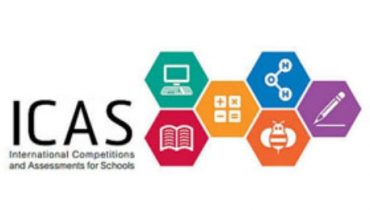
Is your list of must-read books becoming dangerously big? Do you buy a lot of books but do not even start on them because you have no time?
Look at your bookcase and think about the megabytes of already downloaded e-books — the information contained therein dramatically exceeds the data you have already acquired. So, it is high time you started to take steps to improve the situation.
If you want to get ahead in life, you should constantly strive to gain new knowledge. And what’s the best way of doing that?
Right, reading books. They are one of the best sources of information and your personal channel of communication with wise people.
You can also give your IQ a dramatic boost by reading academic papers written by renowned scholars and graduates of prestigious colleges and universities. In fact, it takes very little effort on your part: all you need to do is find a properly credentialed writing service and order a custom writing essay with it. It’s as easy as that!
Like to cope with problems on your own? Just follow the five tips below and you will be able to read at least one book per day!
5 Tips for Rapid Reading
1. Launch Your Internal Reading Accelerator
Hundreds of thousands of dollars are spent on complex devices which are meant to increase the speed of reading. They even create all kinds of sophisticated computer software for this purpose, but all this cannot be compared with an accelerator of reading ability that is found within us. It may surprise you but the powerful accelerator which also makes you more attentive is your hand or, to be more precise, your index finger.
Pick up a book, open it on any page, and begin to read it by tracing your index finger along the lines of words. Your eyes should follow this “pointer” and not vice versa. Make your finger move really fast so your eyes can barely keep up with it. In this way, you will suppress your verbal thinking and get rid of the habit of reading aloud while reading. Practice this method for at least twenty minutes a day. Although it may seem inconvenient at first, you will quickly get used to it. As soon as you start using your finger while reading, your reading speed will begin to increase dramatically.
2. Stop Re-Reading
Re-reading slows you down significantly. Usually, people want to re-read some sentences, and this may happen consciously or unconsciously. Sometimes, it may seem to you that you didn’t quite understand the text, so you decide to re-read it.
Whether you do it purposely and consciously, it is not really that bad. Perhaps, this is not the most effective method for reading comprehension, but it is undoubtedly one of the possible options. It works like this: your eyes unconsciously wander through the text before returning to the sentence you were reading prior to that.
Now, let’s try to break the habit by learning to take in more than one word at a time. Open a book anywhere you want and read as much as you can in 3 minutes. Mark a page where you stopped. Return to the beginning and re-read the same paragraph in 3 minutes. Try to do it faster this time. If necessary, you can measure your reading speed with a stopwatch.
3. Learn to Better Understand the Text
There can be several reasons for your failure to correctly understand what you read. First, you may not have enough vocabulary. You can read a book on medicine or computer programming language which contains many words you simply don’t know. As a result, you will not understand the entire text — it’s as if it was written in a foreign language.
The best solution is to start with easier texts, and then, as you increase your vocabulary, move on to more complex ones. If you still need to read difficult-to-understand books, you will most likely have to look up some of the unknown words. You might also need to memorize new and complicated ones.
The first step to understanding what you have read is determining each paragraph’s main message. As a rule, you do it without even thinking about it. However, it is essential to train this skill to be able to deal with more difficult texts later on.
4. Do Not Read Just for the Sake of Reading
We have been taught to read by moving from one word to another. However, reading should meet the goals that we set ourselves. Perhaps, you have to read a chapter from a business book because your teacher gave you the task. Maybe you are reading a novel just for fun. The more specific your goal is, the easier your reading process will be.
Before you start reading, you should ask yourself one question: Do I understand the book I’m going to read? As soon as you’ve answered this question, you can narrow down your goal by answering the second one: What am I going to get out of the book? The answer to the first question makes it easier to answer the second one.
5. Follow the Storyline
Reproduction of information may not be the easiest task. However, there’s an exercise which can help you easily recall information after reading. You can simply draw a diagonal line and write down a word or phrase on it reflecting the subject of the text you have read.
While reading the text, draw a diagonal line on a blank sheet of paper. After you’re done the reading, write down the paragraph’s main message above this diagonal line. Do it without looking at the text. Add a few more details to your diagonal line — they may look like “tree branches” going up along the sides of the line. This skill can be developed very quickly. It’s, actually, very simple: the more you train, the more you can remember. Other ways of memorizing texts are available here.
To sum up, people who have mastered special reading techniques are able to read about 50 pages per hour and finish a 250-page book in one day. So, if you spend 10 hours a week on reading and use our simple tips, you will be able to read 26,000 pages per year. And this means that you can read more than 100 books per year. That’s what you call time well spent!





